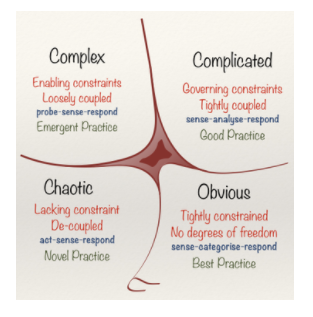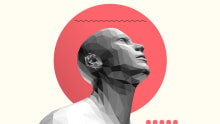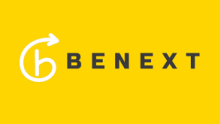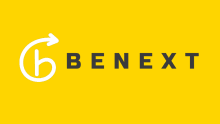BeNext Radio Show: Adopting an agile mindset for HR teams

As the problems facing the world have grown progressively complex, so has the job of those in HR. In the last year, the pandemic has complexified everything from organisational culture to the logistics of travel, to employee experience, to our understanding of mental, physical and financial wellbeing. Even before the pandemic, the forces of automation and digitisation were having a profound impact on the world of work and the role of people professionals within it.
Complexity - and how to approach complex situations - is one of the critical features of agile and design thinking, encouraging an innovative, iterative and compassionate environment in which solutions are reached through observation, conversation, testing and experimentation.
In the second episode of our BeNext Radio show, our host Pilar Orti talks with Ester Martinez about our upcoming course on Design Thinking & Agile for HR Teams (opening April 19th). This four week-program explores the broader methodologies of design thinking, human-centered design and agile as well as how to establish and sustain a mindset of being more agile in a flexible, enabling way.
Why should HR teams be interested in Agile Thinking?
As Ester Martinez points out on the show, the majority of problems we encounter in people strategy are complex by definition. But what exactly is meant by ‘complex’? One of our program Lighthouses, Dave Snowden (Founder and Chief Scientific Officer of Cognitive Edge), devised the Cynefin framework as a “sense-making” device that offers contexts for different decisions and identifies perceptions of different situations. These five domains are listed as simple, complicated, complex, chaotic and disorder depending on their characteristics:

By these definitions, a complex problem is when you don’t really know what you don’t know - even the questions you have to ask - meaning you’re totally in an “unknown unknown” space. You can’t decide on the end state because you have no idea what it looks like and you can only attack it. Therefore, you must shift into a mindset of experimentation and plan in order to understand enough to act, but also enough to learn. “Acting is not an outcome, it’s a learning,” Ester Martinez explains in the podcast. “That’s the fascinating space that all leaders - not only HR leaders are in, but specifically in HR because our workplace is changing, our employee experience is changing, our hybrid model is coming into play. We are in a very complex space at the moment as a community.” By defining where you and your team are in the Cynefin framework, you can help to find the methodologies and tools needed to solve the problems. These are just some of the ideas explored in the BeNext Design Thinking & Agile for HR Team program.
“As leaders, we need to sense which context we are in.”
As part of the podcast, Richard Acosta, a BeNext Lighthouse speaker and Business Agility, Scrum Master & Team Coach at the Hilti Group, expands on definitions of these domains: “complicatedness,” he says, “is an adjective that describes a certain level of predictability, an order, where we are encouraged to simplify scenarios and, based on our deep expertise, respond appropriately. Whereas complexity describes an irrational and unpredictable context where our expertise is not going to save the day.”
In a complex situation, Richard says, it’s necessary to “apply loops of experiments to prove-sense-respond” and these will fail in the majority of cases. “We need to be patient and persistent to reveal the path forward.” For HR leaders negotiating or operating within unpredictable scenarios (a particularly familiar story for many in the last twelve months), we have to “sense the context” we’re in before we can make decisions about how to proceed and act. This is where the innovation, experimentation and iteration of design thinking and agile really comes into play.
Richard says that complicated people-related challenges include things like hiring ten new engineers or training employees in new security policies, whereas complex people-related challenges are situations such as digital transformation, mergers and acquisitions, shifts in management or introducing OKRs. In these complex domains, Richard says, “we can understand why things happen only in retrospect.”
Of course, teams, people and relationships are incredibly complex. That is why we cannot become wedded to the illusory idea we as leaders or managers can control what people do. For this reason, the BeNext Design Thinking and Agile for HR Program focuses more on developing a mindset that enables experimentation, innovation and even failure, rather than one that tries to constrain and control at every turn of the corner.
“Our goal is not to be 100% aligned to a framework”
In our journey of exploration into Agile and Design Thinking for HR, we’ll examine many frameworks and methodologies. However, it’s important not to become overly committed to a single tool or framework. Rather, a central part of the program is to develop a toolbox that can be adapted for a variety of different scenarios depending on a teams’ particular needs. As Richard Acosta says “our goal is not to be 100%, aligned to a framework, our goal is to provide value to our business.”
To find out more about how to use these frameworks and adopt an agile mindset to provide value for your business, download the second episode of the BeNext Radio Show here.
The Design Thinking and Agile for HR Teams program is a fascinating, wide-ranging four-week program that provides a distinct and actionable process for designing initiatives that encompass principles of agile mindsets specifically for HR leaders. To find out more, click here.






